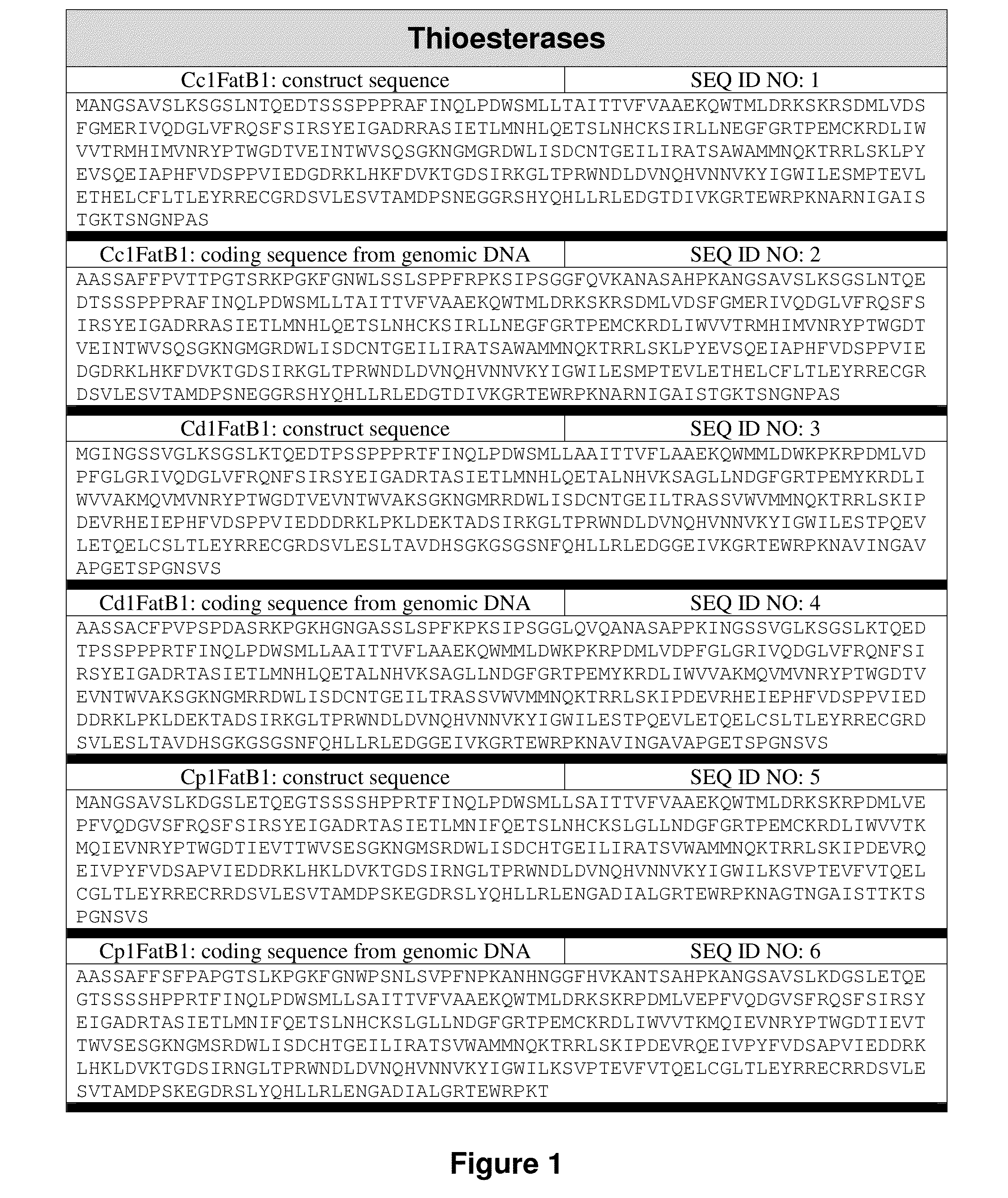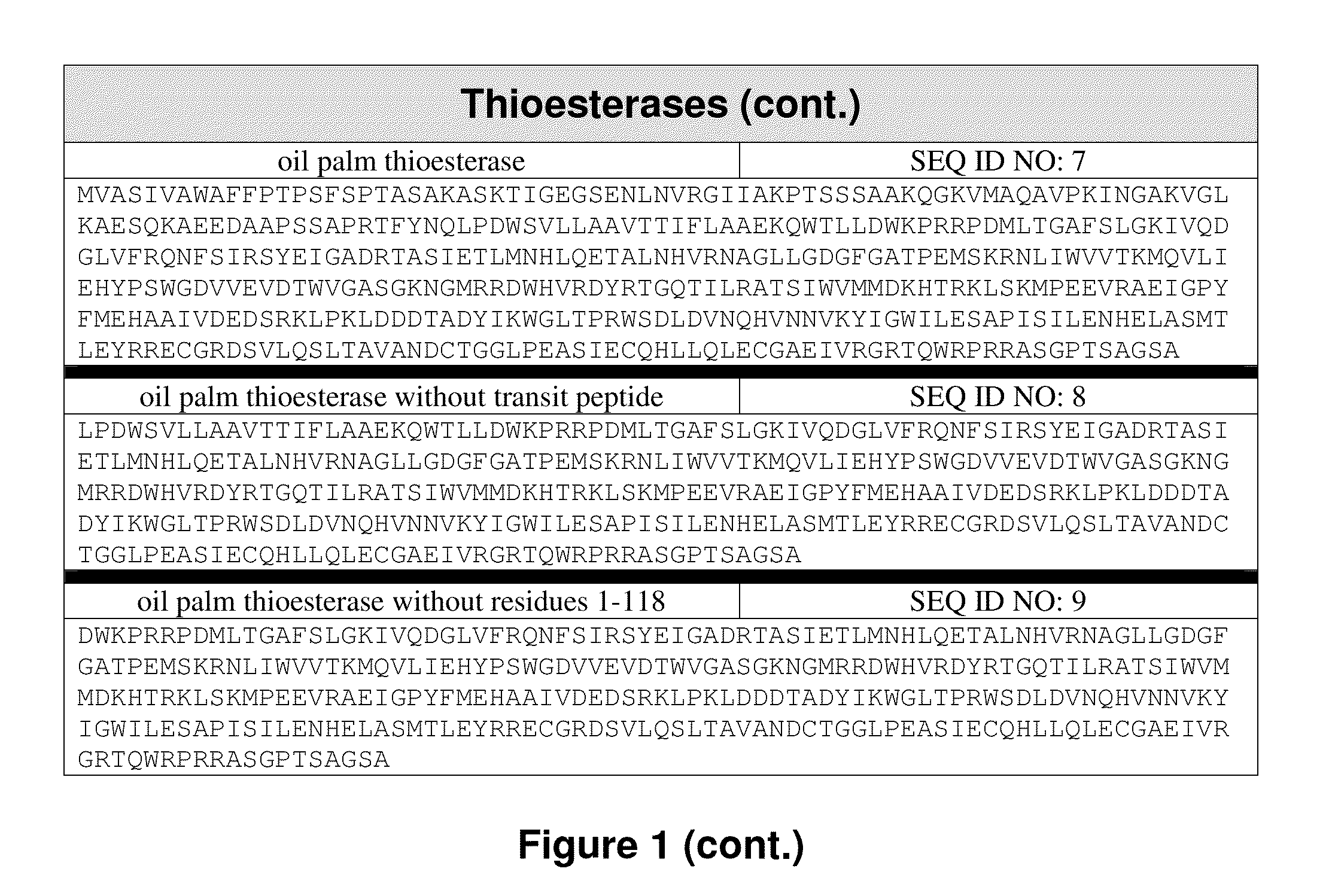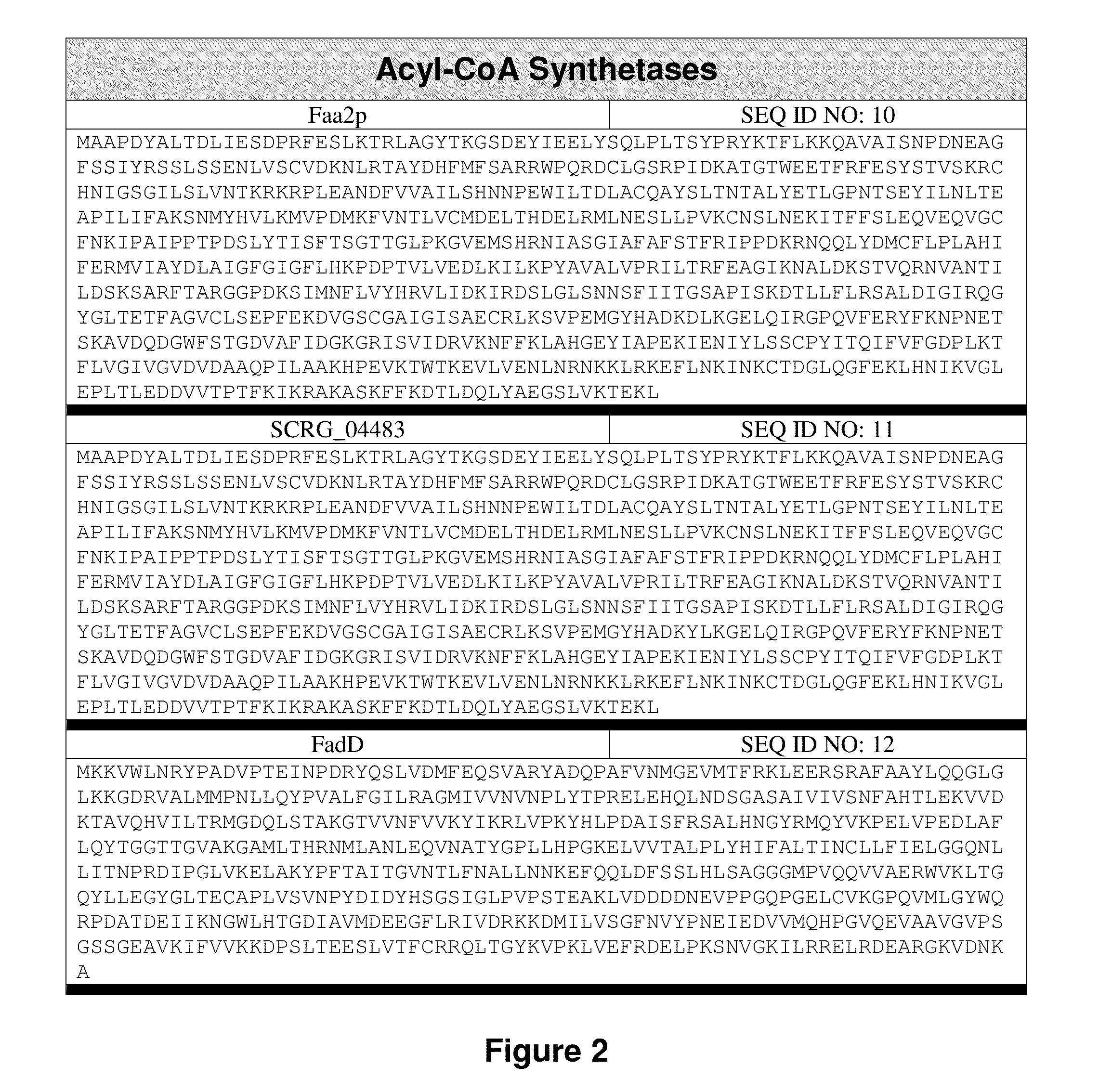Four-gene pathway for wax ester synthesis
a technology of wax ester and gene pathway, which is applied in the field of bioengineering, metabolic biochemistry, and molecular biology, can solve the problems of inability to synthesise wax ester, etc., to achieve efficient and cost-effective, reduce and/or longer chain carbon sources, and biological efficiency and energy-saving effects
- Summary
- Abstract
- Description
- Claims
- Application Information
AI Technical Summary
Benefits of technology
Problems solved by technology
Method used
Image
Examples
embodiments
Embodiment 1
[0233]An isolated or recombinant nucleic acid molecule comprising a nucleic acid sequence encoding a wax ester synthase and at least one of (a) a nucleic acid sequence encoding an acyl-ACP thioesterase, an acyl-CoA thioesterase, or a hydroxybenzoylthioesterase; (b) a nucleic acid sequence encoding an acyl-CoA synthetase; and (c) a nucleic acid sequence encoding an alcohol-forming fatty acyl reductase; wherein the nucleic acid sequence encoding a wax ester synthase and at least one of the nucleic acid sequences encoding a thioesterase, an acyl-CoA synthetase, or an alcohol-forming fatty acyl reductase are configured as a single transcriptional unit; and optionally wherein the nucleic acid molecule further comprises at least one nucleic acid sequence of at least 50, 100, 200, 300, 400, 500, 600, 700, 800, 900, 1000, or 1500 nucleotides derived from the genome of a prokaryotic and / or photosynthetic microorganism.
embodiment 2
[0234]The isolated or recombinant nucleic acid molecule according to embodiment 1, comprising: (a) a nucleic acid sequence encoding an acyl-ACP thioesterase; (b) a nucleic acid sequence encoding an acyl-CoA synthetase; (c) a nucleic acid sequence encoding an alcohol-forming acyl-CoA reductase; and (d) a nucleic acid sequence encoding a wax ester synthase wherein (a), (b), (c), and (d) are configured as a single transcriptional unit.
embodiment 3
[0235]The isolated or recombinant nucleic acid molecule according to embodiment 1 or 2, wherein: (a) is a nucleic acid sequence encoding an acyl-ACP thioesterase derived from a plant species, optionally a Cuphea species or an Elaeis species, and / or is selected from the group consisting of an acyl-ACP thioesterase of: Cuphea wrightii (GenBank Accession AAC49784), Cuphea lanceolata (GenBank Accession CAA54060), Cuphea palustris, (GenBank Accessions AAC49783; AAC49179); Cuphea hookeriana (GenBank Accessions AAC72882; AAC49269; AAC72881; AAC72883), Cuphea calophylla (GenBank Accession ABB71580), Arabidopsis (GenBank Accessions XP—002885681; NP—172327); Arachis hypogaea (GenBank Accession ABO38556); Brassica (GenBank Accession CAA52069.1), Camellia oleifera (GenBank Accession ACQ57189); Cinnamonum camphorum (GenBank Accession AAC49151); Cocos nucifera (GenBank Accessions AEM72519; AEM72520; AEM72521); Glycine max (GenBank Accession ABD91726); Garcinia mangostana (GenBank Accession AAB515...
PUM
| Property | Measurement | Unit |
|---|---|---|
| temperature | aaaaa | aaaaa |
| temperature | aaaaa | aaaaa |
| temperature | aaaaa | aaaaa |
Abstract
Description
Claims
Application Information
 Login to View More
Login to View More - R&D
- Intellectual Property
- Life Sciences
- Materials
- Tech Scout
- Unparalleled Data Quality
- Higher Quality Content
- 60% Fewer Hallucinations
Browse by: Latest US Patents, China's latest patents, Technical Efficacy Thesaurus, Application Domain, Technology Topic, Popular Technical Reports.
© 2025 PatSnap. All rights reserved.Legal|Privacy policy|Modern Slavery Act Transparency Statement|Sitemap|About US| Contact US: help@patsnap.com



